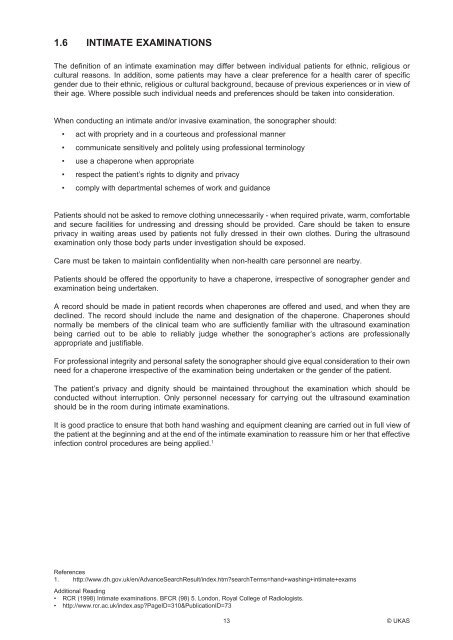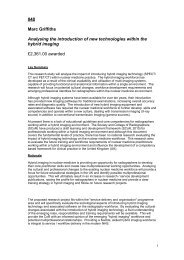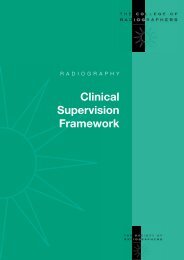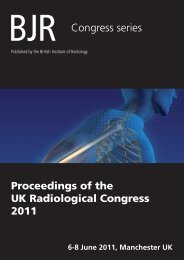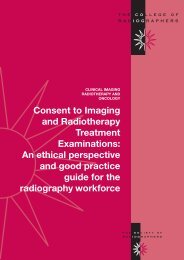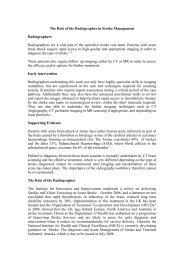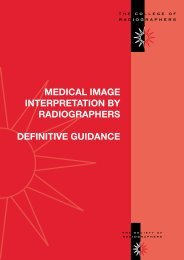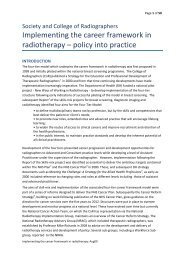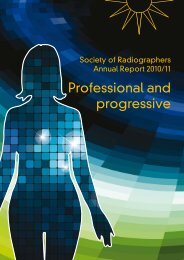Guidelines For Professional Working Standards Ultrasound Practice
Guidelines For Professional Working Standards Ultrasound Practice
Guidelines For Professional Working Standards Ultrasound Practice
Create successful ePaper yourself
Turn your PDF publications into a flip-book with our unique Google optimized e-Paper software.
1.6 Intimate Examinations<br />
The definition of an intimate examination may differ between individual patients for ethnic, religious or<br />
cultural reasons. In addition, some patients may have a clear preference for a health carer of specific<br />
gender due to their ethnic, religious or cultural background, because of previous experiences or in view of<br />
their age. Where possible such individual needs and preferences should be taken into consideration.<br />
When conducting an intimate and/or invasive examination, the sonographer should:<br />
• act with propriety and in a courteous and professional manner<br />
• communicate sensitively and politely using professional terminology<br />
• use a chaperone when appropriate<br />
• respect the patient’s rights to dignity and privacy<br />
• comply with departmental schemes of work and guidance<br />
Patients should not be asked to remove clothing unnecessarily - when required private, warm, comfortable<br />
and secure facilities for undressing and dressing should be provided. Care should be taken to ensure<br />
privacy in waiting areas used by patients not fully dressed in their own clothes. During the ultrasound<br />
examination only those body parts under investigation should be exposed.<br />
Care must be taken to maintain confidentiality when non-health care personnel are nearby.<br />
Patients should be offered the opportunity to have a chaperone, irrespective of sonographer gender and<br />
examination being undertaken.<br />
A record should be made in patient records when chaperones are offered and used, and when they are<br />
declined. The record should include the name and designation of the chaperone. Chaperones should<br />
normally be members of the clinical team who are sufficiently familiar with the ultrasound examination<br />
being carried out to be able to reliably judge whether the sonographer’s actions are professionally<br />
appropriate and justifiable.<br />
<strong>For</strong> professional integrity and personal safety the sonographer should give equal consideration to their own<br />
need for a chaperone irrespective of the examination being undertaken or the gender of the patient.<br />
The patient’s privacy and dignity should be maintained throughout the examination which should be<br />
conducted without interruption. Only personnel necessary for carrying out the ultrasound examination<br />
should be in the room during intimate examinations.<br />
It is good practice to ensure that both hand washing and equipment cleaning are carried out in full view of<br />
the patient at the beginning and at the end of the intimate examination to reassure him or her that effective<br />
infection control procedures are being applied. 1<br />
References<br />
1. http://www.dh.gov.uk/en/AdvanceSearchResult/index.htmsearchTerms=hand+washing+intimate+exams<br />
Additional Reading<br />
• RCR (1998) Intimate examinations. BFCR (98) 5. London, Royal College of Radiologists.<br />
• http://www.rcr.ac.uk/index.aspPageID=310&PublicationID=73<br />
13 © UKAS


